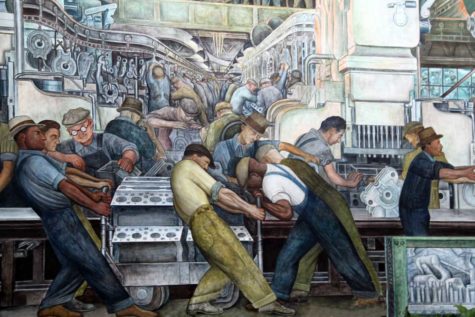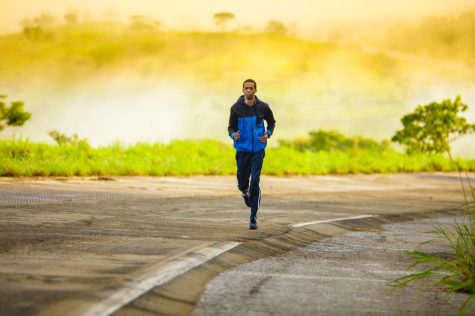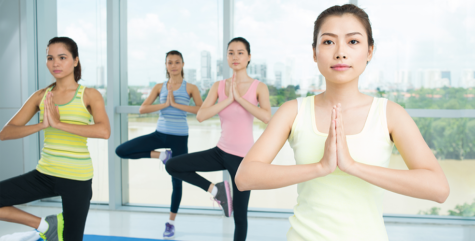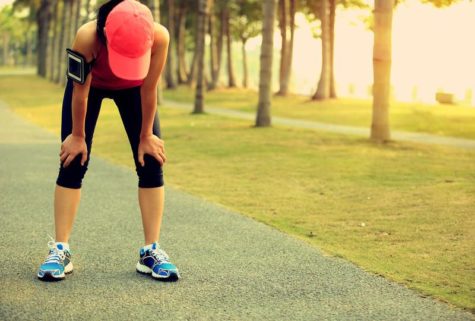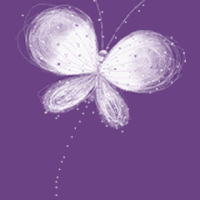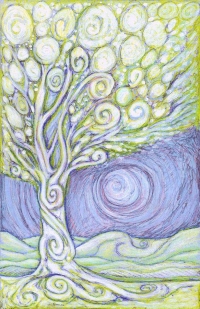Exercise and Fitness
The Physical Stress Factor
This is part of a series of articles about The Stress Factor, from Instant Healing by Serge Kahili King.
Physical stress is a relatively simple phenomenon to describe. After engaging in physical effort for a long time the body begins to resist the activity more and more until exhaustion or accident forces it to stop.
I would point out, though, that the more enjoyable the effort seems to be, the longer you can continue it, because you are not resisting it as much. Low resistance means less tension, and less tension means less effect from the stress. If you love to play volleyball, you may be able to do it for hours and hours and end up pleasantly tired but exhilarated. If you hate to do housework or clean out the garage, however, you may end up exhausted and achy after a couple of hours.
Another kind of physical stress that produces tension occurs when you are poked or prodded with something sharp, hard, or excessively hot or cold. Although you don’t think it’s strange to be cut or bruised or burned by such contact, some people’s injuries remain for a long time, while others are able to heal very quickly, and still others can walk on fire or get punctured by nails without harm.
Having walked on extremely hot lava rocks barefoot without injury, and having healed broken bones, burns, and bruises of my own in under an hour many times, I can tell you that reducing tension as quickly as possible is a critical factor in the length of the healing process.
Physical stress can also come from reactions to the environment. Allergies are so common that many people take them for granted, and some people are highly sensitive to trace amounts of natural and man made chemicals and to electromagnetic radiation. The body tries to protect itself against such intrusions not only by internal chemical means, but also by creating a barrier of muscle tension (note that our internal organs and nerves are surrounded by muscle tissue). And then there is the stress caused by such things as hunger, thirst, and lack of movement. It isn’t very hard to see how physical stress can cause physical tension.
Yoga Asanas
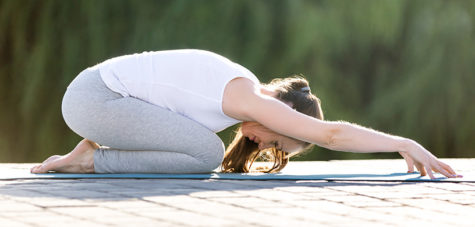 All yogic exercises should be performed on a clean mat, a carpet or a blanket covered with a cotton sheet. Clothing should be light and loose-fitting to allow free movement of the limbs. The mind should be kept off all disturbances and tensions. Regularity and punctuality in practicing yogic exercises is essential. Generally, 5 a.m. to 8 a.m. is the ideal time for yoga practices.
All yogic exercises should be performed on a clean mat, a carpet or a blanket covered with a cotton sheet. Clothing should be light and loose-fitting to allow free movement of the limbs. The mind should be kept off all disturbances and tensions. Regularity and punctuality in practicing yogic exercises is essential. Generally, 5 a.m. to 8 a.m. is the ideal time for yoga practices.
Asanas should always be practiced on an empty stomach. Shavasana should be practiced for a brief period before starting the rest of the exercises as this will create the right mental condition. Asanas should be performed at a leisurely slow-motion pace, maintaining poise and balance.
Yoga asana techniques are greatly enhanced if you have the help of a competent teacher.
- Asanas Shavasana ( Dead body pose )
Lie flat on your back, feet comfortably part, arms and hands extended about six inches from the body, palms upwards and fingers half-folded. Close your eyes. Begin by consciously and gradually relaxing every part and each muscle of the body ; feet, legs, calves, knees, thighs, abdomen, hips, back, hands, arms, chest,shoulders, neck, head and face. Relax yourself completely feeling as if your whole body is lifeless.
Now concentrate your mind on breathing rhythmically as slowly and effortlessly as possible. This creates a state of complete relaxation. Remain motionless in this position, relinquishing all responsibilities and worries for 10 to 15 minutes. Discontinue the exercise when your legs grow numb.
This asana helps bring down high blood pressure, and relieves the mind, particularly for those who are engaged in excessive mental activity. This exercise should be done both at the beginning and at the end of the daily round of yogic asanas. During a fast, shavasana soothes the nervous system.
- Padmasana ( Lotus pose )
Sit erect and stretch your legs out in front of you. Bend one leg to place the foot on the thigh of the other, the sole facing upwards. Similarly, bend the other leg too, so that the heels are opposite each other and placed in such a way that they press down on the other side of the groin. Keep your neck, head and spine straight. Place your palms one upon the other, both turned upward and cupped, and rest them on the upturned heels a little below the navel.
Padmasana is a good pose for doing pranayama and meditation. It helps in the treatment of many heart and lung diseases and digestive disorders. It also calms and refreshes the mind.
- Yogamudra
Sit erect in padmasana. Fold your hands behind your back, holding your left wrist with the right hand. Take a deep breath. While exhaling, bend forward slowly keeping your hands on your back. Bring your face downwards until your nose and forehead touch the floor. While inhaling , slowly rise back to the upright position.
The practice of this asana tones up the nervous system, builds up powerful abdominal muscles and strengthens the pelvic organs. It helps pep up digestion, boosts the appetite and removes constipation. It tones up and relaxes the nerves of the head and face. It also strengthens the sex glands.
- Vajrasana ( Pelvic pose )
Sit erect and stretch out your legs. Fold your legs back, placing the feet on the sides of the buttocks with the soles facing back and upwards. Rest your buttocks on the floor between your heels. The toes of both feet should touch. Now, place your hands on your knees and keep the spine, neck and head straight.
Vajrasana can be performed even after meals. It improves the digestion and is beneficial in cases of dyspepsia, constipation, colitis, seminal weakness and stiffness of the legs. It strengthens the hips, thighs, knees, calves, ankles and toes.
- Shirshasana ( Topsyturvy pose )
Shirsha means ‘head’. In this asana, one stands on one’s head. Kneel on the ground, interlocking the fingers of both hands. Place the ‘ finger-lock ‘ on the ground in front of you, keeping the elbows apart. Support your head on the finger-lock. Start raising your knees one at a time, to chest level. Then raise your feet slowly so that the calf muscles touch the thighs. Breathe normally. This is the first stage which should be done perfectly as the balance of the final posture depends mainly on this stage.
Next, raise your knees first and then slowly raise the feet so that the whole body is straight, like a pillar. This is the final pose. Return to the original position by reversing the order, step by step. This asana should not be done jerkily.
The important factor in shirshasana is mastering the balance, which comes through gradual practice. For proper balance, elbows should be placed firmly on the ground, alongside the finger-lock. Initially the asana should be done for 60 seconds only. The duration may be gradually increased by a further 10 seconds each week.
Regular practice of shirshasana will benefit the nervous, circulatory, respiratory, digestive, excretory and endocrine systems. This asana helps cases of dyspepsia, seminal weakness, varicose veins, arteriosclerosis, jaundice, renal colic and congested liver. Those suffering from oozing from the ears, iritis, high blood pressure or a weak heart should not practice this asana.
- Viparitakarani ( Inverted action pose )
Lie flat on your back, with your feet together and arms by your side. Press your palms down, raising your legs to a perpendicular position without bending the knees. Your palms should touch the waist. Then straighten your legs. The trunk should not make a right angle with the ground but simply an upward slanting position. The chest should not press against the chin but be kept a little away.
To return to the ground, bring your legs down slowly, evenly balancing your weight. Through this asana, the muscles of the neck become stronger and blood circulation is improved. The functioning of the cervical nerves, ganglia and the thyroid also gets improved.
- Sarvagasana ( Shoulder stand pose )
In Sanskrit ‘sarva’ means whole and ‘anga’ means limb. Almost all parts of the body are involved in and benefit from this asana. Lie flat on your back with your arms by the side, palms turned down. Bring your legs up slowly to a 90° angle and then raise the rest of the body by pushing the legs up and resting their raise the rest of the body by pushing the legs up and resting their weight on the arms. Fix your chin in jugular notch, and use your arms and hands to support the body at the hip region.
The weight of the body should rest on your head, back and shoulders, your arms being used merely for balance. The trunk and legs should be in a straight line. The body, legs , hips and trunk should be kept as vertical as possible. Focus your eyes on your big toes. Press your chin against your chest. Hold the pose for one to three minutes. Return to the starting position slowly reversing the procedure.
Sarvangasana helps relieve bronchitis, dyspepsia, varicose veins and peps up the digestion. It stimulates the thyroid and para-thyroid glands, influences the bran, heart and lungs. It helps lymphatic juices to circulate in the brain and strengthens the mind. This asana should not be done by those suffering Viparitkarani from high blood pressure, heart disease and eye trouble.
- Matsyasana (Fish pose )
Sit in Padmasana. Bend backwards and lie flat on your back without raising your knees. Press your palms beneath the shoulder. Push the hip backwards thus making a bridge -like arch with the spine. Then making hooks of your forefingers, grasp your toes without crossing your arms. Maintain this pose and breathe rhythmically and comfortably. Reverse the order and return gradually to the starting position of Padamasana.
Matsyasana is beneficial in the treatment of acidity, constipation, diabetes, asthma, bronchitis and other lung disorders.
- Uttanapadasana ( Left-lifting pose)
Lie on your back with leg and arms straight, feet together, palms facing downwards, on the floor close to the body. Raise your legs above two feet from the floor without bending your knees. Maintain this pose for some time. Then, lower your legs slowly without bending the knees. This asana is helpful for those suffering from constipation. It strengthens the abdominal muscles and intestinal organs.
- Halasana ( Plough pose )
Lie flat on your back with legs and feet together, arms by your side with fists closed near your thigh keeping your legs straight, slowly raise them to angles of 300, 600 and 900, pausing slightly at each point. Gradually, raise your legs above your head without bending your knees and then move them behind until they touch the floor. Stretch your legs as far as possible so that your chin presses tightly against the chest while your arms remain on the floor as in the original position. Hold the pose from between 10 seconds to three minutes, breathing normally. To return to the starting position slowly reverse the procedure.
This asana relieves tension in the back, neck, and legs and is beneficial in the treatment of lumbago, spinal rigidity and rheumatism, myalgia, arthritis, sciatica and asthma.
- Bhujangasana ( Cobra pose )
Lie on your stomach with your legs straight and feet together, toes pointing backwards. Rest your forehead and nose on the ground. Place your palms below the shoulders and your arms by the side of the chest. Inhale and slowly raise your head, neck, chest and upper abdomen from the navel up. Bend your spine back and arch your back as far as you can looking upwards. Maintain this position and hold your breathe for a few seconds. Exhale, and slowly return to the original position.
This asana has great therapeutic value in the treatment of diseases like cervical spondylitis, bronchitis, asthma and eosinophillia. It removes weakness of the abdomen and tones up the reproductive system in women. It exercises the vertebrae, back muscles and the spine.
- Shalabhasana ( Locust pose )
Lie flat on your stomach, with your legs stretched out straight, feet together, chin and nose resting on the ground, looking straight ahead. Move your arms under the body, keeping them straight, fold your hands into fists and place them close to the thighs. Now, raise your legs up keeping them straight together and stretching them as far back as possible without bending your knees and toes. Hold this position for a few seconds and repeat four or five times.
This asana helps in the treatment of arthritis, rheumatism and low backache. The whole body is strengthened by this asana especially the waist, chest, back and neck. Persons suffering from high blood pressure or heart disease should not practice this asana.
- Dhanurasana ( Bow pose )
Lie on your stomach with your chin resting on the ground, arms extended alongside the body with the legs straight. Bend your legs back towards the hips, bring them forward and grasp your ankles. Inhale and raise your thighs, chest and head at the same time. Keep your hands straight. The weight of the body should rest mainly on the navel region. Therefore, arch your spine as much as possible. Exhale and return slowly to the starting position, by reversing the procedure.
Dhanurasana provides good exercise for the arms, shoulders, legs, ankles, back and neck. It also strengthens the spine. It relieves flatulence and constipation and improves the functioning of the pancreas and the intestines. It should not be done by those with a weak heart, high blood pressure and ulcers of the stomach and bowels.
- Makarasana ( Crocodile pose )
Lie flat on your abdomen. Spread your legs, with heels pointing towards each other. Bring your left hand under the right shoulder and grasp it. Grasp the left shoulder with your right hand, keeping the elbows together, one upon the other on the ground. Your face should be between your crossed hands. Relax and breathe normally for two or three minutes. Then gradually go back to the sitting position. This asana completely relaxes both the body and the mind and also rests the muscles. It is beneficial in the treatment of hypertension, heart disease and mental disorders.
- Vakrasana
Sit erect and stretch legs out. Raise your right knee until your foot rests by the side of the left knee. Place your right hand behind your back without twisting the trunk too much. Then bring your left arm from in front of you over the right knee. Place your left palm on the ground near the heel of your right foot. Push your knee as far as to the left arm. Twist your trunk to the right as much as possible. Turn your face to the right over the right shoulder. Release and repeat on the left side.
This asana tones up the spinal and abdominal muscles and nerves and activates the kidneys, intestines, stomach, adrenaline and gonad glands. It relieves cases of constipation and dyspepsia.
- Ardhamatsyendrasana
This is the half position of Matsyendrasana, which is named after the great sage Matsyendra. Sit erect on the ground, stretching your legs in front of you. Insert your left heel in the perineum, keeping the left thigh straight. Place your right foot flat on the floor, crossing the left knee. Pass your left arm over the right knee and grasp the big toe of your right foot. Grasp your left thigh from the rear with your right hand. Turn your head, neck, shoulders and trunk to the right bringing your chin in line with the right shoulder. Maintain this position for a few seconds, gradually increasing the duration to 2 minutes. Repeat the same process on the other side for the same duration.
This asana exercises the vertebrae and keeps them in good shape. It helps the liver, spleen, bladder, pancreas, intestines and other abdominal organs, and also stretches and strengthens the spinal nerves. This asana is beneficial in the treatment of obesity, dyspepsia, asthma and diabetes.
- Paschimottanasana (Posterior stretching pose )
Sit erect. Stretch your legs out in front of you, keeping them close to each other. Bend your trunk and head forward from the waist without bending your knees and grasp the big toes with your rest your forehead on your knees. With practice, the tense muscles become supple enough for this exercise. Old persons and persons whose spine is still should do this asana slowly in the initial stages. The final pose need be maintained only for a few seconds. Return to the starting position gradually.
Paschimottanasana is a good stretching exercise in which the posterior muscles get stretched and relaxed. It relieves sciatica, muscular rheumatism of the back, backache, lumbago and asthmatic attacks. It is also valuable in constipation, dyspeptics and other abdominal disorders.
- Gomukhasana ( Cow-face pose )
Sit erect on the floor, with your legs outstretched. Fold your leg back. Place your left foot under the right hip. Similarly, fold back the right leg and cross your right foot over your left thigh. Place your right heel against the left hip. Both soles should face backwards, one over the other. Now interlock your hands behind your back. See to it that if your right leg is over the left, then your right elbow should face upward and the left elbow downward. This position is reversed when the leg position is changed. Hold the pose for 30 seconds and then repeat the procedure reversing the process.
The practice of gomukhasana will strengthen the muscles of the upper arm, shoulder, chest, back, waist and thigh. It is beneficial in the treatment of seminal weakness, piles, urethral disorders and kidney troubles. It also relieves varicose veins and sciatica.
- Pavanmuktasana ( Gas-releasing pose )
Lie flat on your back, hands by your side. Fold your legs back, placing your feet flat on the floor ; make a finger-lock with your hands and place them a little below the knees. Bring your thighs up near your chest. Exhale and raise your head and shoulders and bring your nose between your knees. This is the final position. Maintain this pose for a few seconds and repeat three to five times. Reverse the procedure to get back to the original position.
This asana strengthens the abdominal muscles and internal abdominal organs like the liver, spleen, pancreas and stomach. It helps release excessive gas from the abdomen and relieves flatulence. Persons suffering from constipation should do this exercise in the morning after drinking lukewarm water to help proper evacuation of the bowels.
- Chakrasana ( Lateral bending pose )
Stand straight with your feet and toes together and arms by your sides, palms facing and touching the thighs. Raise one arm laterally above the head with the palm inwards up to shoulder level and palm upwards when the arm rises above the level of your head. Then, bend your trunk and head sideways with the raised arm touching the ear, and sliding the palm of the other hand downwards towards the knee. Keep your knees and elbows straight throughout. Maintain the final pose for a few seconds. Then gradually bring your hand back to the normal position. Repeat the exercise on the other side.
This asana induces maximum stretching of the lateral muscles of the body, especially the abdomen. It strengthens the knees, arms and shoulders and increases lung capacity.
- Trikonasana ( Triangle pose )
Stand erect, with your legs apart. Stretch your arms up to shoulder level. Bend your trunk forwards and twist to the left, looking upwards and keeping your left arm raised at an angle of 900. Place your right palm on your left foot without bending the knees. Maintain this pose for a few seconds. Then straighten up and return to the normal position. Repeat the procedure on the other side.
Trikosana is an all-round stretching exercise. It keeps the spinal column flexible and reduces the fat on the lateral sides of the body. Besides, it stimulates the adrenal glands and tones up the abdominal and pelvic organs.
About Yoga Therapy
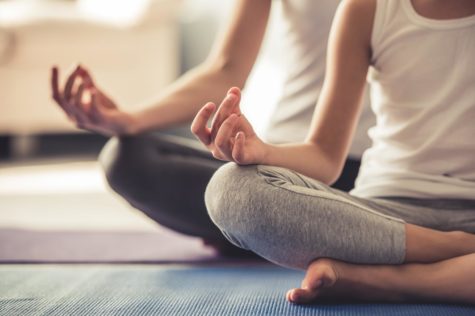
The Yoga Therapy or ‘ yoga-chikitsa’ refers to the treatment of diseases by means of yogic exercises which may be physical or mental or both. It is a specialized form of yogic culture. This mode of treatment has been practiced in India from very ancient times. Many references to yoga have been made in the Upanishads. It was, however, Maharishi Patanjali who in about the first century B.C. gave a systematic account of the traditional yogic teaching.
The term ‘ Yoga’ is derived from the Sanskrit root ‘yug’ which means “to join” . It signifies union between the individual soul (jivatma) and the universal soul (parmatma). It aims at obtaining relief from pain and suffering. Basically, human evolution takes place on three different planes, namely physical, mental and spiritual. Yoga is a means of attaining perfect health by maintaining harmony and achieving optimum functioning on all three levels through complete self-control.
Yogic kriyas, asanas and pranayama constitute the physical basis of yoga. More information about them can be found here:
The practice of kriyas and asanas leads to excellent circulation. It also energizes and stimulates major endocrine glands of the body. Yogic exercises promote inner health and harmony, and their regular practice helps prevent and cure many common ailments. They also help eliminate tensions, be they physical, mental or emotional.
Pranayama slows down the ageing process. In ordinary respiration, one breathes roughly 15 times a minute, taking in approximately 20 cubic inches of air. In pranayama the breathing rate is slowed down to once or twice a minute and the breath inhaled is deep and full, taking nearly 100 cubic inches of air.
All yogic exercises should be performed on a clean mat, a carpet or a blanket covered with a cotton sheet. Clothing should be light and loose-fitting to allow free movement of the limbs. The mind should be kept off all disturbances and tensions. Regularity and punctuality in practicing yogic exercises is essential. Generally, 5 a.m. to 8 a.m. is the ideal time for yoga practices.
Asanas should always be practiced on an empty stomach. Shavasana should be practiced for a brief period before starting the rest of the exercises as this will create the right mental condition. Asanas should be performed at a leisurely slow-motion pace, maintaining poise and balance.
Yoga asanas and pranayama techniques are greatly enhanced if you have the help of a competent teacher.
Exercise in Health and Disease

A world famous physical educationist, Eugene Sandow, has very aptly said, ” Life is movement, stagnation is death. ” Physical exercise is essential for the maintenance of normal condition of life. Lack of natural exercise is one of the chief causes of weakness and ill-health.
In recent years, the need for exercise has been recognized even in sickness. Physio and occupational therapy are now standard procedures in medicine to restore the use of muscles and nerves that have been injured by disease or by accident. Patients with organic ailments are now advised to stay in bed for the minimum period considered necessary.
Exercise and Activity
For corrective living, it is essential to differentiate between exercise and activity. While both are important as they are involved in vital physical movement, they vary in degree and benefits. Both employ the body in voluntary movement.
Activity uses the body to a limited degree and generally to achieve a specific purpose. Exercise employs the body over the widest possible range of movement for the particular purpose of maintaining or acquiring muscle tone and control with maximum joint flexibility. Activity requires less physical effort and often less conscious effort once the routine has been established. Exercise demands considerable physical effort and is more beneficial as mental concentration is simultaneously employed.
Benefits
Systematic physical exercise has many benefits. The more important benefits are mentioned below: Regular exercise taken properly can achieve the increased use of food by the body, which contributes to health and fitness. The basal metabolic rate and habitual body temperature will slowly rise during several weeks of physical exercise, if the program is not too hard. The healthy person usually has abundant body heat and a warm radiant glow.
- Regular progressive physical exercise can bring about the balance of automatic, or involuntary , nervous system. The tone of the vagus nerve, one of the nerves that control sensation and motion, is strengthened. This accounts for stronger pulse waves, higher metabolism and better circulation.
- Exercise can prevent or reduce gravitational ptosis or sag, as it is commonly called. Ptosis results from uneven flow of blood in the feet, legs and lower abdomen.
- Improved capillary action in the working of muscular and brain tissue results from exercise carried to the point of real endurance. This permits greater blood flow and gives the muscles, including the heart, more resistance to fatigue. Massage, heat and moderate exercise are relatively ineffective in producing additional capillary action as compared with vigorous exercise.
- The full use of the lungs in vigorous exercise can reduce or prevent lung congestion due to lymph accumulation.
- Gas and intra-intestinal accumulations can be reduced by exercise that acts to knead and squeeze or vibrate the intraintestinal mass.
- Better respiratory reserve is developed by persistent exercise. This ensures better breath holding, especially after a standard exercise. With greater respiratory reserves, exercise become easier.
- Improvement in tone and function of veins can be accomplished by repetitiously squeezing and draining the blood out of them and then allowing them to fill.
- Sweating in exercise aids kidneys by helping to eliminate the waste matter from the body.
- Consistent exercise leads to improvement in quality of blood. Studies have shown improved hemoglobin levels, relatively greater alkalinity, improved total protein content and a grater red cell count.
- Systemic exercise promotes physical strength and mental vigor and strengthens will power and self control leading to harmonious development of the whole system.
Exercise promotes longevity Medical researchers at Harvard and Standford Universities who studied the habits and health of 17,000 middle-aged and older men, reported the first scientific evidence that even modest exercise helps prolong life.
Dr. Ralph S. Paffenberger, the visiting professor of epidemiology at the Harvard School of Pubic Health, who is the principal author of the report said, ” We have found a direct relationship between the level of physical activity and the length of life in the college men we have studied. ” He added,” This is the first good evidence that people who are active and fit have a longer life span than those who are not. ”
A strong connection between a hard and a healthy hard has also been convincingly demonstrated in the same study. The study showed that the less active persons ran a three times higher risk of suffering a fatal heart attack than did those who worked the hardest. Review of fatal heart attacks revealed that the less active men were also three times more likely to die unexpectedly and rapidly within an hour after the attack.
A parallel research report from doctors in Dulles also concluded, after a study of the lives and habits of 6,000 men and women, that the physically fit were less likely to develop hypertension. Dr. Steven N. Blair who headed the research group said, ” We followed the physical health and habits of these people for an average of four-and-a-half years and the data showed that the lack of physical fitness leads to hypertension. ”
Exercise increases calorie output. The body fat can be reduced by regular exercise. It is therefore, useful for weight reduction in conjunction with restricted food intake. According to a study by Dr. Peter Wood of Stanford University Medical School, author of “California Diet and Exercise Programme”, very active people eat about 600 more calories daily than their sedentary counterparts but weight about 20 per cent less.
Up to 15 hours after vigorous exercise, the body continues to burn calories at a higher rate than it would have without exercise. Moderate physical exercise has been found to be accompanied by less obesity and lower cholesterol levels. Regular exercise plays an important role in the fight against stress. It provides recreation and mental relaxation besides keeping the body physically and mentally fit. It is nature’s best tranquilizer.
Chronic fatigue caused by poor circulation can be remedied by undertaking some exercise on a daily basis. It helps relieve tension and induces sleep. Moderate physical exercise at the end of a try day can bring a degree of freshness and renewed energy.
Exercise also plays an important role in the treatment of depression. According to Dr. Robert Brown, a clinical associate professor at the University of Virginia School of Medicine, ” Exercise produces chemical and psychological changes that improves your mental health. It changes the levels of hormones in blood and may elevate your beta-endorphins (mood-affecting brain chemicals). Exercise also gives a feeling of accomplishment and thereby reduces the sense of helplessness. ”
Methods of Exercise
Several systems of exercise have been developed over the years, the most popular among them being the Swedish system and yoga asanas, the later having been practiced from ancient times in India. Whichever system you choose to adopt, the exercises should be performed systematically, regularly and under proper guidance. To be really useful, exercise should be taken in such a manner as to bring into action all the muscles of the body in a natural way.
Walking is one such exercise. It is, however, so gentle in character that one must walk several kilometers in a brisk manner to constitute a fair amount of exercise. Other forms of good exercise are swimming, cycling, horse-riding, tennis, etc.
Precautions
Vigorous exercise of any kind should not be taken for an hour and a half after eating, nor immediately before meals. Weak patients and those suffering from serious diseases like cancer, heart trouble, tuberculosis and asthma should not undertake vigorous exercise except under the supervision of a competent physician.
If exercising makes you tired, stop immediately. The purpose of exercise should be to make you feel refreshed and relaxed and not tired. The most important rule about the fitness plan is to start with very light exercise and to increase the effort in gradual and easy stages. The sense of well-being will begin almost immediately. One can start off with a brisk walk for 15 to 20 minutes. A comfortable sense of tiredness should be the aim.
It is valueless and possibly harmful to become exhausted or seriously short of breath. Perhaps, one should aim at activities which need about two-thirds of one’s maximum ability. One way to assess is to count your own pulse rate.
Counting of pulse is quite easy. Feel the pulse on your left wrist with the middle three fingers of your right hand. Press just firmly enough to feel the beat easily. Now count the number of beats in 15 seconds, with the help of a watch with clear second hand and calculate your rate by multiplying by four. At rest heart beats 70 to 80 times a minute. This rate increases during exercise. Really vigorous can produce rates as high as 200 beats per minute or more. Reasonable aim is to exercise at about two-thirds of maximum capacity. It follows that heart rate should be about 130 per minute during and just after exercise. Always avoid over-exertion and never allow your pulse go above 190 per minute minus your age.
